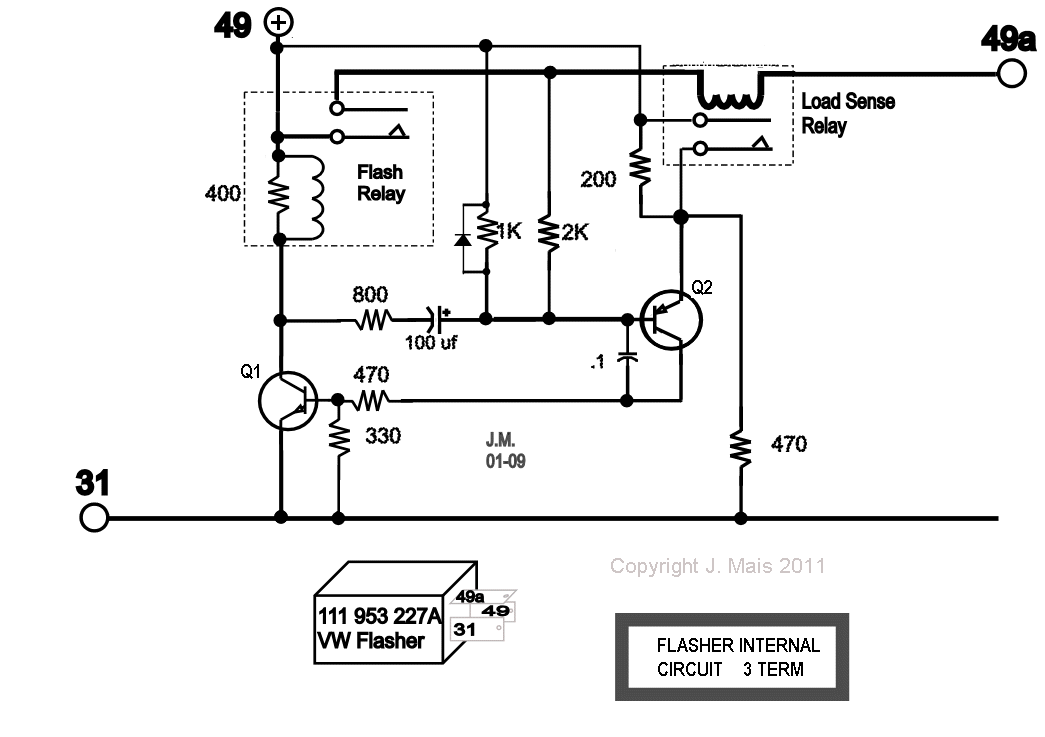The drawing below shows the electronic circuit inside a typical 3-terminal flasher. Note that there were many variations of this circuit design over the years.
2 transistors. Q1 and Q2, form a multivibrator which drives the Flash relay in the collector circuit of Q1. A small voltage is always present on 49a by way of the 2K resistor (the Load Sense relay has only a few turns of very heavy wire for its coil). When the Turn Indicator signal switch is closed, the turn lamps are connected from Ground to Terminal #49a. Their low resistance drags the voltage at 49a down to nearly zero which, in turn, pulls the base of Q2 lower. Q2 is a PNP transistor, so more current flows emitter-to-collector at this time. That current passes into the base of Q1, turning it fully on and energizing the relay, causing the turn signals to immediately light.
The 2K resistor is now pulled up to the full 12V level which reduces the base drive available to Q2. However, the 100 uf timing capacitor doesn't permit Q2 to shut off immediately. Current continues to flow until the capacitor has charged via the 800 Ohm resistor. At that time, Q2 turns off and allows Q1 to drop out the relay, turning off the lamps. This cycle repeats, with the capacitor charging and discharging.
The Load Sense relay "measures" the lamp current. If one lamp burns out, the relay will not close its contacts, leaving the 200 Ohm resistor in the emitter circuit of Q2. This resistor and the 470 Ohm resistor form a voltage divider supplying the emitter of Q2. With the relay contacts open, the emitter doesn't pull all the way up to 12V and the capacitor takes less time to reach the cutoff point for Q2. This causes a rapid flashing of the signal lamps, alerting the driver to a lamp malfunction.
The dash/speedo signal lamp for the Indicators is connected from +12V to Terminal #49a. The resistance of the small dash bulb also helps to maintain voltage on 49a until the Turn Indicator switch is closed. As soon as the switch is closed, 49a goes to Ground level, causing the dash signal to light. A fraction of a second later, the flasher relay applies +12V to 49a, lighting the Turn Indicator bulbs. At this point, the dash signal bulb has +12V on both sides of the bulb; no current can flow so the signal goes out. This is why the dash signal flashes opposite to the Turn Indicators.

